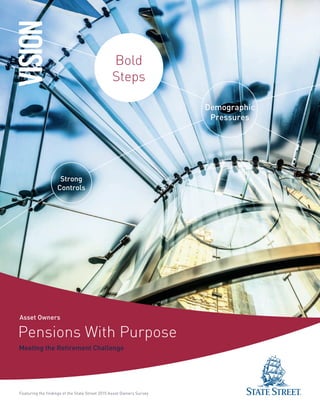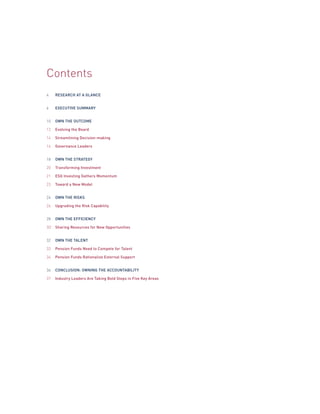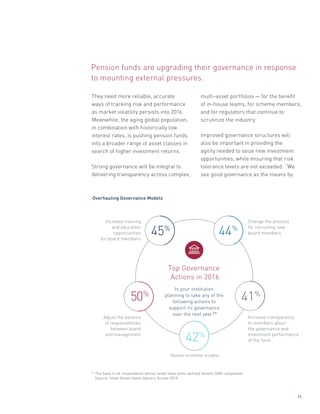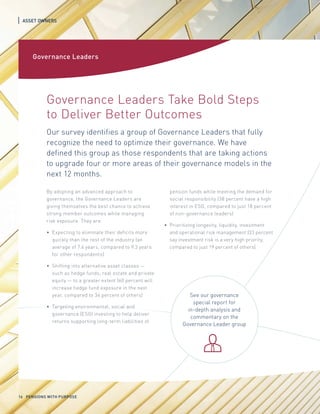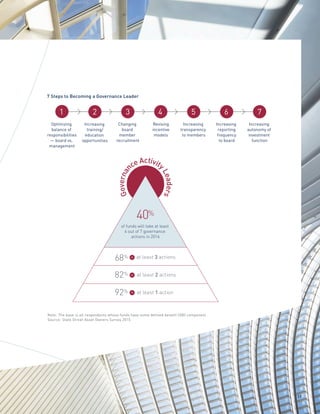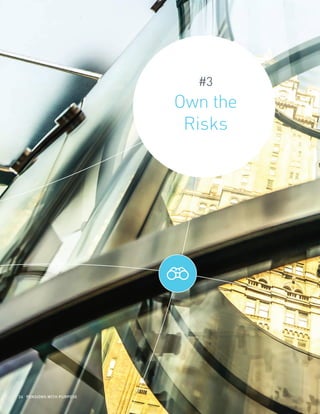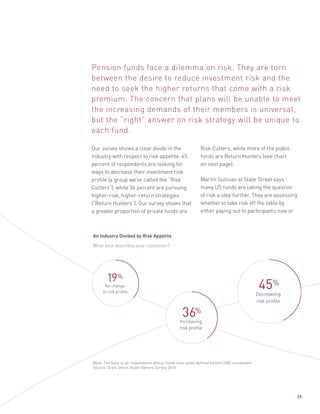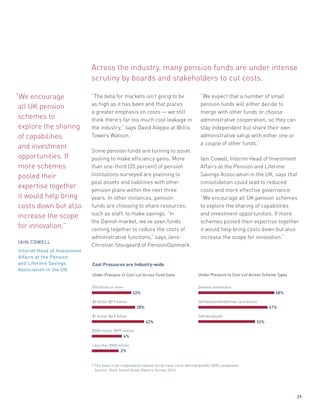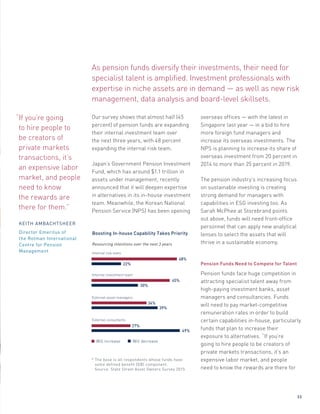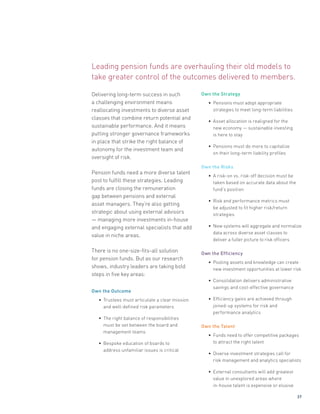The document summarizes the findings of a State Street survey on pension funds and asset owners. It identifies five key areas pension funds need to focus on: own the outcome, own the strategy, own the risks, own the efficiency, and own the talent. Regarding own the outcome, the survey found 92% of funds plan to upgrade governance over the next year. Many boards lack expertise in alternative assets and risk assessment. Leading funds are improving board education and transparency. Streamlining decision making between boards and management is also a priority.
